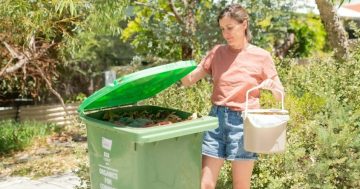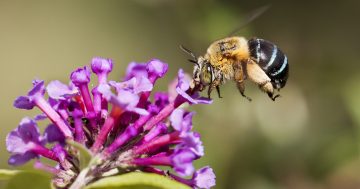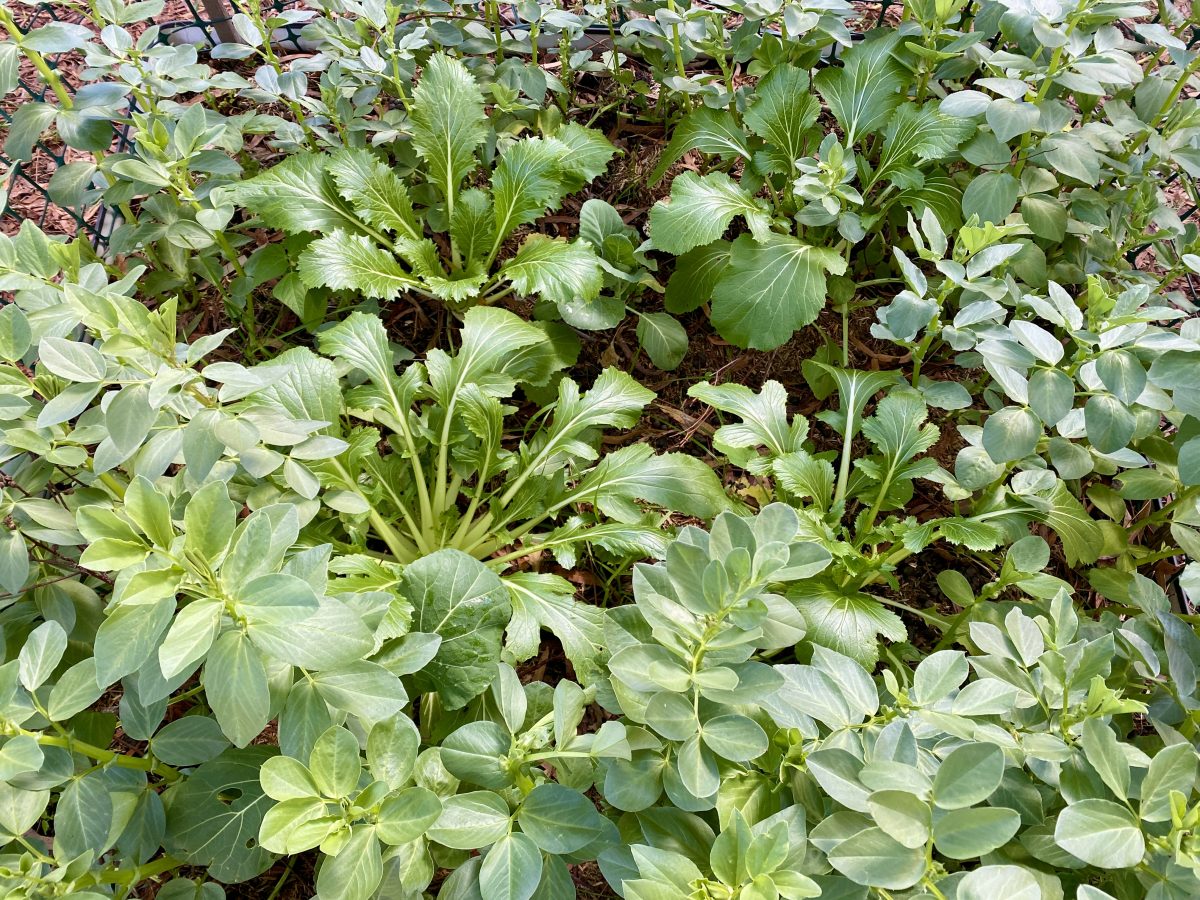
Your home veggie garden will flourish with a good layer of homemade compost. Photo: Lucy Ridge.
You may be wondering why the food writer is going on about compost, but food and food waste are intricately connected topics. To be an environmentally responsible foodie, you also need to consider where your food scraps are going. A home compost bin is a brilliant way to transform food scraps, improve the environment, cut gardening costs and even connect with your local community!
I am the self-appointed compost guardian in the small apartment building where I live. We have some communal garden space, including two compost bins and a couple of worm farms. Eight households contribute to the compost: that’s eight households’ worth of food scraps staying out of landfill (where they will turn to noxious methane) and instead become rich, black soil that can be used in the garden. Australia wastes 7.6 million tonnes of food each year, approximately one-third of this in households, so the environmental impact of composting is profoundly important.
Creating a compost bin is much easier than many people think.
Get started with layers of ‘browns’ (aka carbon) and ‘greens’ (aka nitrogen) in a simple plastic bin with a lid and an open base and aerate it regularly. Keep adding in your food scraps and pretty soon your compost will start cooking; literally, the composting process creates heat!
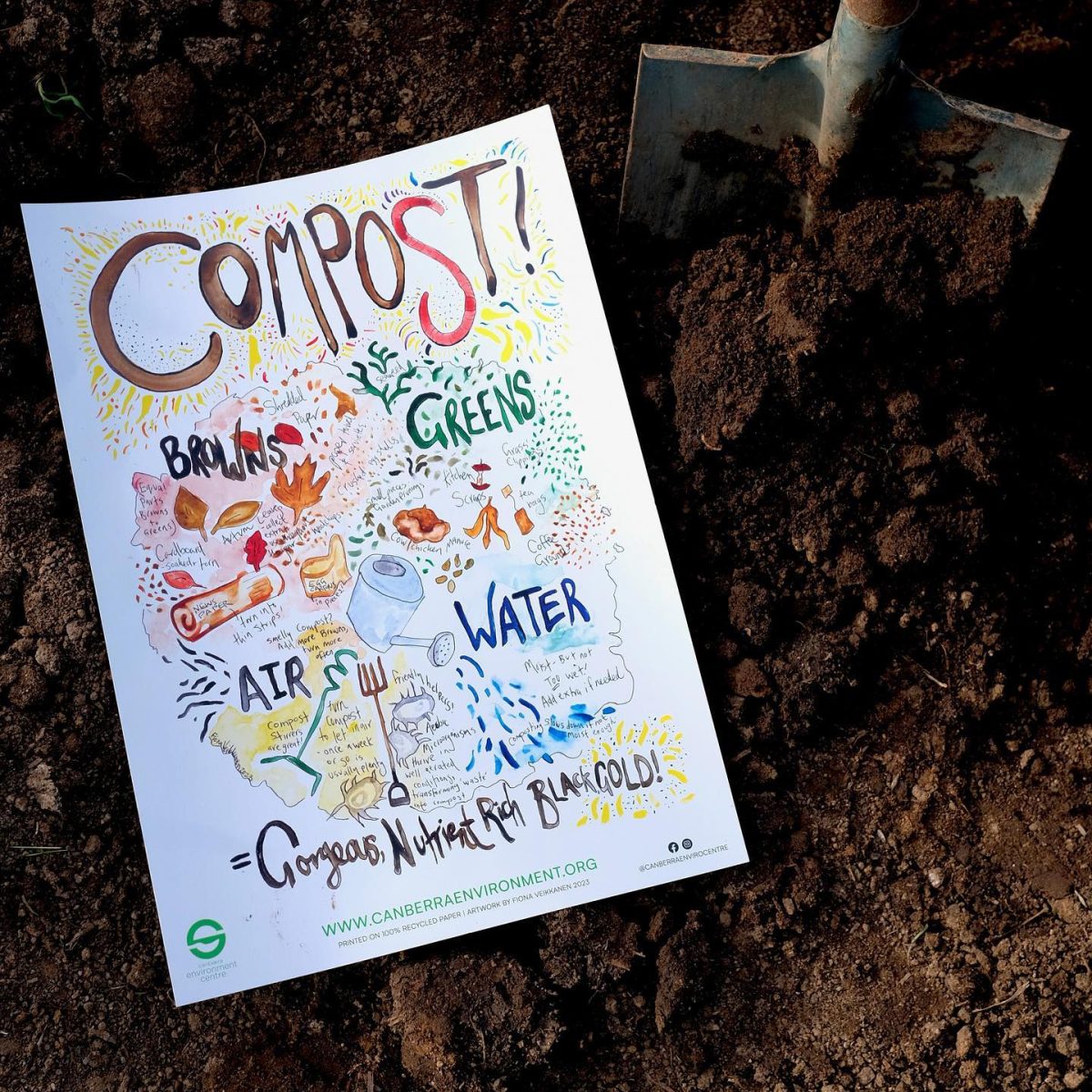
The Canberra Environment Centre offers free online resources about composting, runs regular workshops and also sells these beautiful posters. Photo: Canberra Environment Centre/Facebook.
The biggest mistake people make when composting is adding too much nitrogen and not enough carbon. This can result in a smelly, slimy mess that can attract pests and will put people off the notion of composting. But it’s a simple fix: add more carbon. This could be in the form of dry autumn leaves, shredded newspaper or torn up egg cartons. As a rule, try to add roughly equal amounts of browns and greens, and turn the pile regularly with a compost screw tool, or simply use a pitchfork.
The ACT Government continues to expand their FOGO program, but most Canberrans still don’t have access. And while reducing food waste through FOGO is a good option for those without a backyard, a home composting system comes with so many other benefits that FOGO can’t provide.
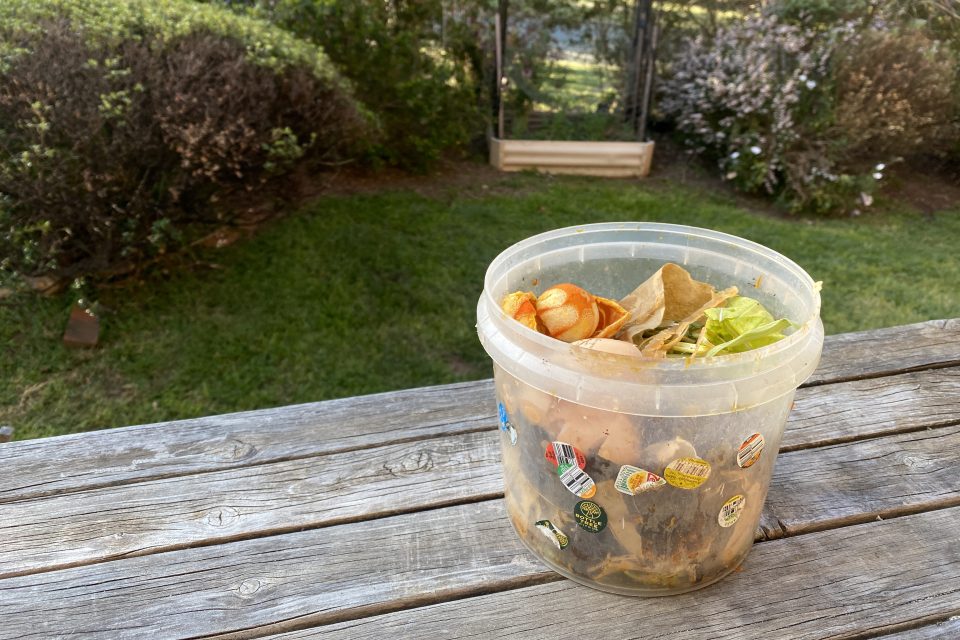
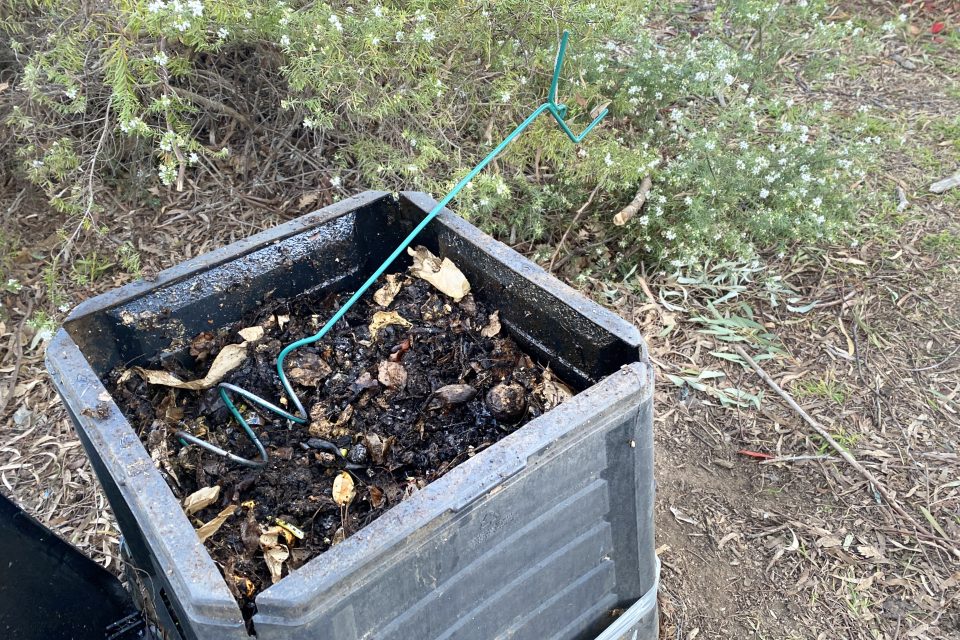
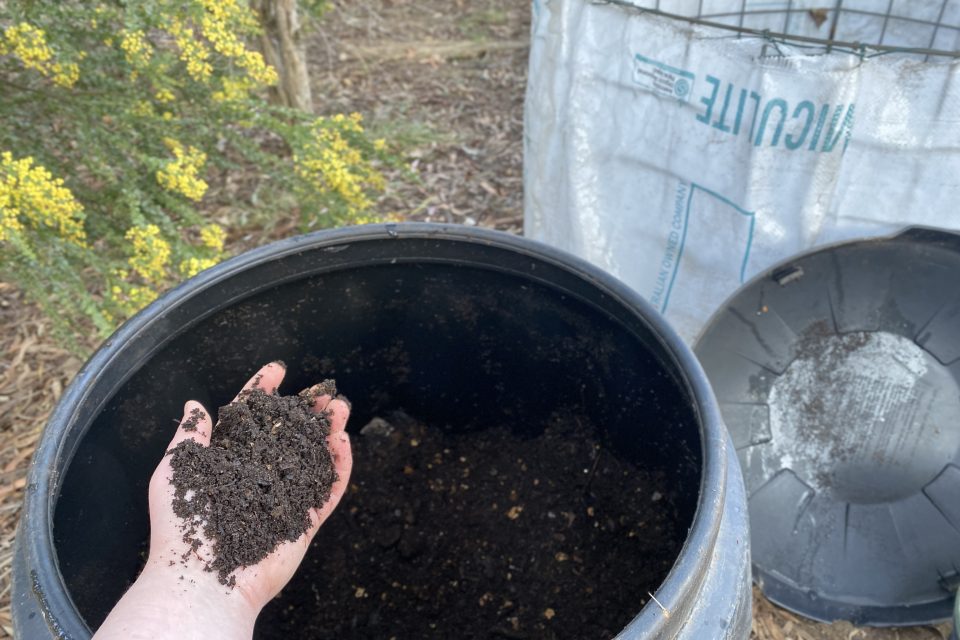
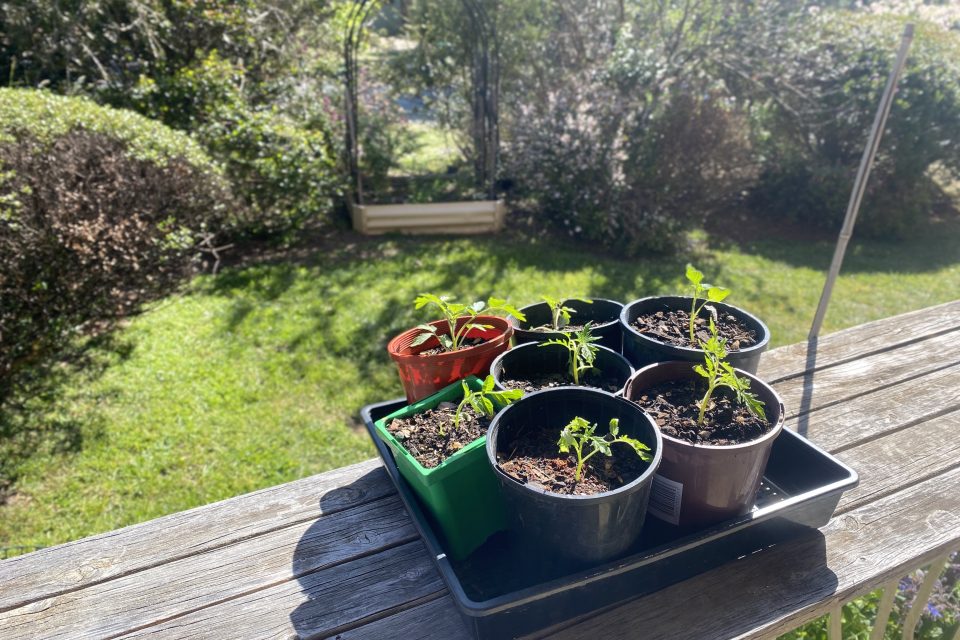
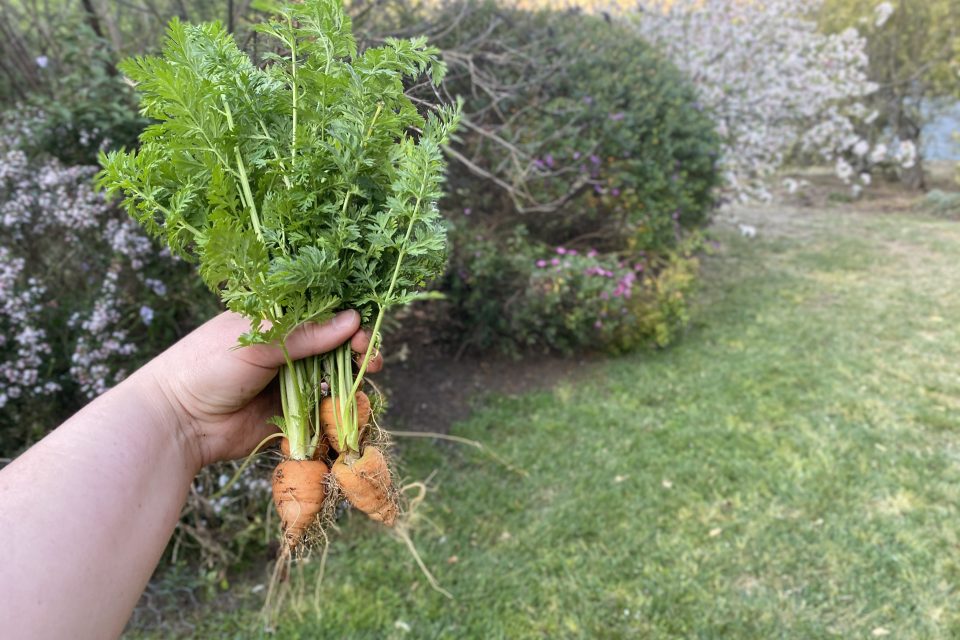
Beyond the environmental and social benefits, there are a surprising number of health benefits too!
There is increasing research to support the idea that being outdoors and engaging with your garden is beneficial to mental health. Getting your hands dirty can make you happier! I have personally found that the feeling of tangible progress when turning food waste into soil helps to buffer my emotional resilience against the intangible threat of climate change and the subsequent feelings of helplessness it creates.
This weekend I was able to harvest beautiful soil from the compost bin to pot up my tomato seedlings in anticipation of warmer weather. There were even plenty of extra seedlings to be given away on my local Buy Nothing Group. If I’d purchased bagged compost for that task I’d be $20 out of pocket, I’d have a big plastic bag to dispose of, and I wouldn’t really know what had gone into the soil. There have been cases of commercial composts being contaminated with herbicides that linger and affect plant growth. The only nasty things in my homemade compost are the fruit stickers we occasionally forget to remove: can we ditch plastic stickers on fruit, please!?
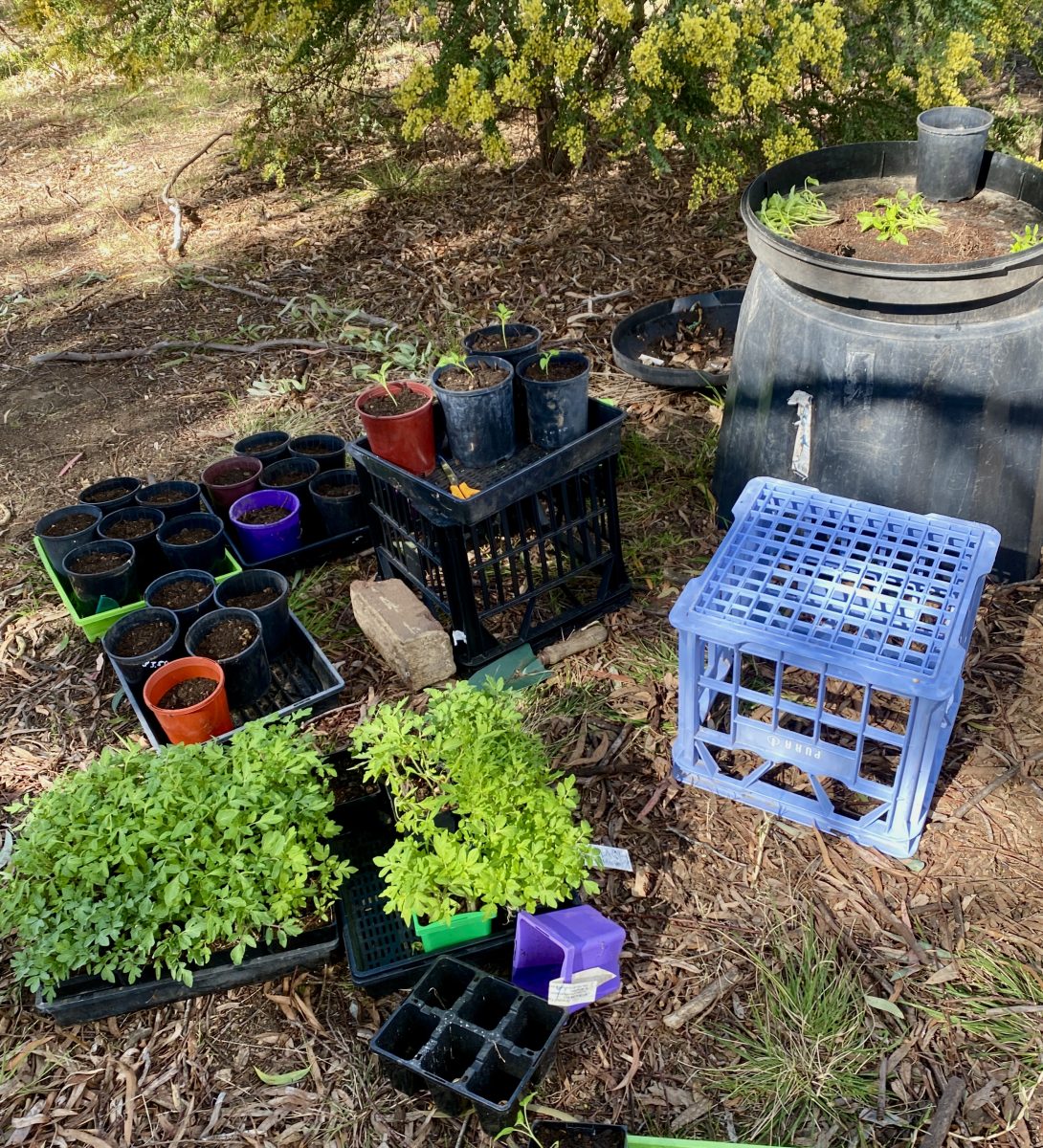
Homemade compost is a great soil base for tomato seedlings, and any extras can be shared with neighbours. Photo: Lucy Ridge.
As well as composting food scraps and paper, you can compost your pet’s hair, nail clippings, pizza boxes, paper towels and more. You can also compost dog poo, but it’s recommended that you use a separate system and don’t use that compost on your vegetable garden (but it’s fine for non-edible plants). Similarly, meat products are best disposed of in a Bokashi or similar system and used for non-edible plants. A lot of takeaway containers from restaurants and other products have shifted to green packaging, but make sure you check if it’s home compostable or if it requires treatment in a commercial composting system.
While it might be tempting to purchase a more expensive, off-the-ground, enclosed, spinning compost bin, these can actually be much harder to use. Because they’re not connected with the earth, you won’t get the same number of beneficial insects and, when full, these bins can be difficult to turn. Getting the balance right for the microorganisms who do all the hard work is much easier in a grounded bin.
If you don’t have a space where you can compost at home, connect with a neighbour who has space in their bin using the ShareWaste app. We have some neighbours who use our compost bin, and it’s a great way to get to know people who live in the area.
If you’d like to learn more about composting, the Canberra Environment Centre has free resources available on their website, and often runs workshops. Follow them on Facebook or Instagram.
Original Article published by Lucy Ridge on Riotact.


